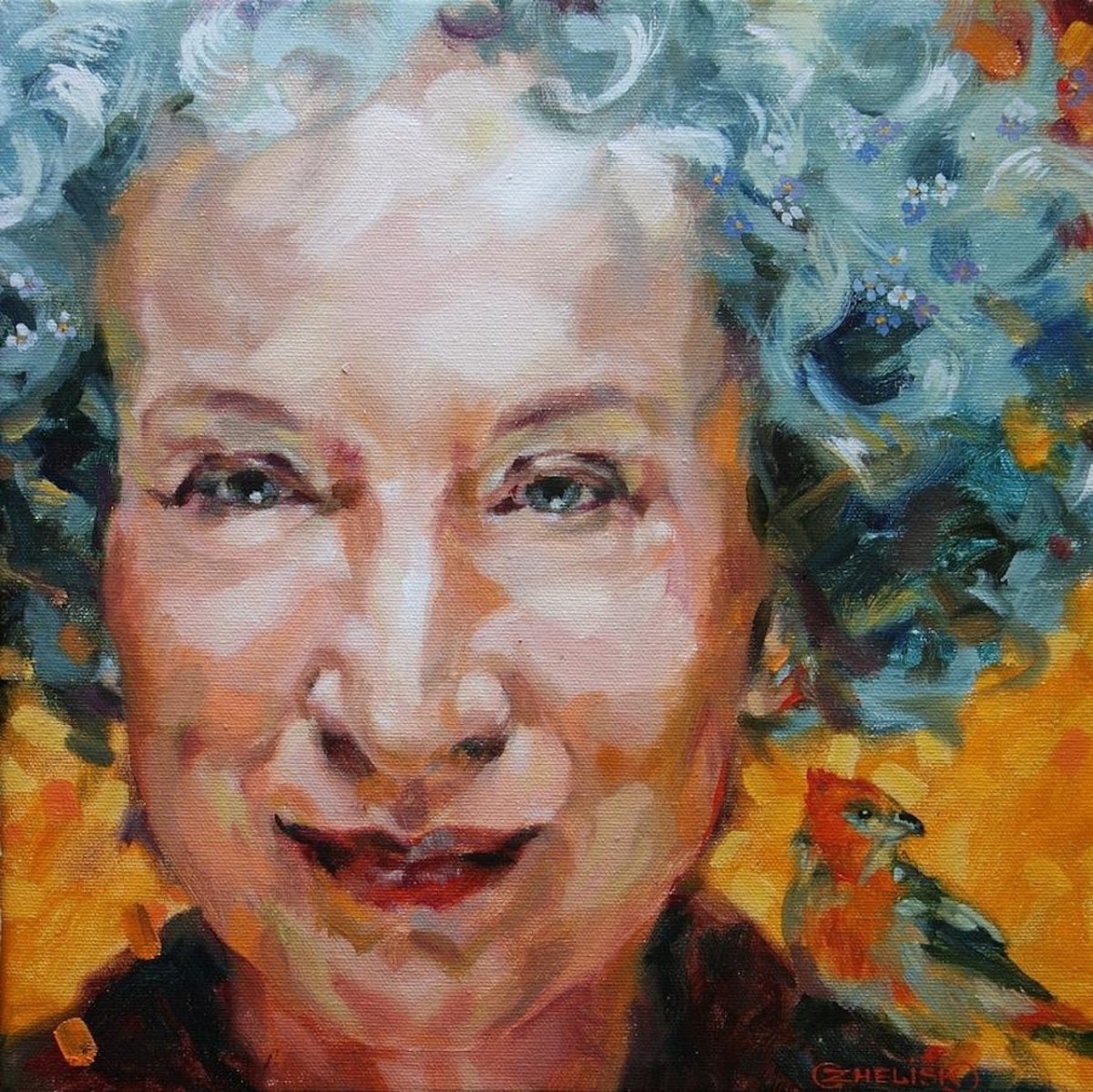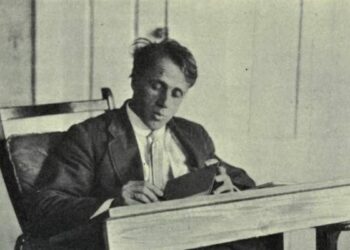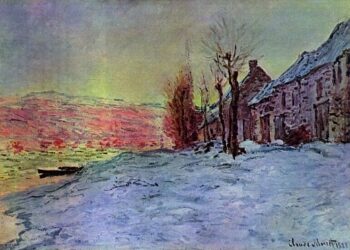Table of Contents
ToggleIntroduction
Backdrop Addresses Cowboy Summary By Margaret Atwood Margaret Atwood, a Canadian poet, novelist, and literary critic, is celebrated for her ability to dissect complex themes related to gender, power, identity, and societal structures. One of her works that encapsulates her sharp wit and insightful critique is the poem Backdrop Addresses Cowboy, which first appeared in her 2002 collection The Door.
This poem is a fascinating exploration of gender roles, the Western genre, and the traditional notion of masculinity. Atwood, known for her keen observation and dark humor, engages with a stereotypical “cowboy” character who embodies an ideal of rugged individualism and masculinity that is both romanticized and questioned within the poem.
Through Backdrop Addresses Cowboy, Atwood juxtaposes the vast, untamed wilderness often depicted in Western myths with the complexities of modern life, offering a critique of the masculine archetype in popular culture. The “cowboy,” a staple figure in Western film and literature, is positioned as a symbol of power, independence, and freedom—but Atwood’s lens is far more critical. In this poem, she takes on the role of a narrator addressing the cowboy, drawing attention to the contradictions within this idealized figure.
Summary of the Poem
Backdrop Addresses Cowboy consists of a monologue in which the speaker addresses the figure of the “cowboy,” who serves as a symbolic representation of traditional masculinity and rugged individualism. Through this address, Atwood dissects and critiques the cowboy persona, ultimately revealing the fragility and emptiness of this cultural icon.
The poem begins with a direct address to the cowboy, placing him in a “backdrop,” perhaps signifying his role within a specific cultural or historical context—the backdrop of the Western genre. The speaker then reflects on the cowboy’s supposed characteristics: his strength, independence, and connection to the land. Atwood presents the cowboy as both a figure to be admired and one whose strength is often hollow or unsustainable.
Read more
Atwood does not idealize the cowboy, but rather explores the tensions and contradictions inherent in the cowboy image. She critiques the glorification of masculinity that is often associated with the cowboy figure in Western narratives. The speaker points out the inherent violence in the cowboy’s life, his loneliness, and his role as an outcast. Rather than seeing the cowboy as a symbol of freedom or heroic masculinity, the poem suggests that the cowboy’s existence is marked by alienation and fragility.
Through the poem’s critical tone, Atwood underscores the ways in which the cowboy’s supposed toughness and independence are undermined by his dependence on violence, isolation, and an unsustainable lifestyle. The “cowboy” is portrayed not as a hero but as a tragic figure—one whose persona is tied to a bygone mythos that cannot endure in the modern world.

Themes in Backdrop Addresses Cowboy
The poem touches on a variety of complex themes, many of which revolve around gender, societal expectations, and the fragility of masculinity. The following is an analysis of the key themes in the poem.
1. The Critique of Masculine Ideals
Atwood’s Backdrop Addresses Cowboy is an exploration and critique of traditional notions of masculinity. The cowboy figure represents an idealized form of masculinity—tough, stoic, independent, and free from emotional vulnerability. These ideals are particularly prevalent in Western films and literature, where the cowboy is a hero who navigates a harsh world with grit and resolve.
However, Atwood’s speaker does not present the cowboy as a hero. Rather, she deconstructs his masculinity, pointing out the flaws and contradictions that lie beneath the surface. The cowboy’s independence is shown to be a form of isolation, and his strength is often associated with violence and aggression. Through this portrayal, Atwood critiques the pressure placed on men to conform to these restrictive gender roles, which ultimately harm their emotional well-being and relationships.
Read more
2. The Fragility of the Cowboy Persona
Another central theme in the poem is the fragility of the cowboy persona. While the cowboy is often depicted as a resilient figure, Atwood suggests that his toughness is an illusion. In the backdrop of the poem, the cowboy is exposed as vulnerable and fragile. His outward bravado hides the emotional and psychological struggles that accompany his solitary existence.
Atwood’s cowboy is not a perfect or invincible figure, but rather someone who is trapped by the very persona that he has built around himself. The cowboy’s violence and solitude are indicative of a deeper internal emptiness, suggesting that this idealized form of masculinity is ultimately unsustainable. The cowboy’s persona is shown to be just that—a constructed identity that conceals vulnerability and human frailty.
3. The Relationship Between Masculinity and Violence
Violence is another key theme in the poem. Atwood’s depiction of the cowboy is inextricably linked to acts of violence—whether physical or psychological. The cowboy’s world is one defined by brutality, and his actions are often violent, both in the context of his work (as a protector of land or enforcer of justice) and his personal relationships.
Atwood critiques the connection between masculinity and violence, suggesting that these qualities are often glorified and romanticized. The cowboy, with his violent tendencies, becomes a symbol for how society links masculinity with power and aggression. The violence associated with the cowboy is not portrayed as heroic, but as a reflection of the toxic aspects of masculinity that society often fails to examine critically.
4. The Myth of the Cowboy as an Icon of Freedom
Backdrop Addresses Cowboy Summary By Margaret Atwood The cowboy is traditionally seen as a figure of freedom and autonomy, living outside societal constraints. However, Atwood dismantles this myth by exposing the underlying realities of the cowboy’s existence. While he may be free from social norms, the cowboy is not free from his own inner turmoil, loneliness, and isolation.
The cowboy’s supposed freedom is not a true form of liberation, but rather an escape from the responsibilities and connections that define human life. Atwood suggests that the cowboy’s “freedom” comes at the expense of deeper emotional connections and fulfillment. The idea of the cowboy as an icon of freedom is thus subverted, revealing the limitations and costs of living outside societal expectations. Backdrop Addresses Cowboy Summary By Margaret Atwood
5. Gender and Power Dynamics
Backdrop Addresses Cowboy Summary By Margaret Atwood Atwood’s poem also explores the power dynamics that shape the relationships between men and women. The speaker’s address to the cowboy suggests a power imbalance, as the cowboy is portrayed as both a symbol of dominance and a subject of critique. The dynamics between gender roles are explored as the cowboy, who may once have been the ideal of masculinity, is placed in a position where he must contend with his own limitations.
Through the depiction of the cowboy, Atwood critiques the way traditional gender roles perpetuate power imbalances and the expectations that are placed on both men and women. The cowboy’s strength and dominance are not an expression of true power, but rather a reflection of societal norms that constrain both men and women in different ways. Backdrop Addresses Cowboy Summary By Margaret Atwood

Conclusion
Backdrop Addresses Cowboy Summary By Margaret Atwood Backdrop Addresses Cowboy is a powerful critique of traditional masculinity, using the cowboy as a symbol to expose the contradictions and fragility inherent in the ideal of rugged individualism. Atwood’s poem interrogates the myth of the cowboy, suggesting that his strength and freedom are illusory and unsustainable. Through her critical examination of gender, violence, and power, Atwood challenges the cultural norms that glorify these ideals and invites readers to reconsider the limitations of the cowboy persona.
Atwood’s work remains a sharp commentary on societal expectations, gender roles, and the human condition, encouraging us to question the myths and symbols that shape our understanding of masculinity and identity. Backdrop Addresses Cowboy Summary By Margaret Atwood
Read more
FAQ
1. What is the cowboy symbolizing in the poem?
The cowboy symbolizes traditional masculinity—an idealized and often romanticized notion of toughness, independence, and freedom. However, Atwood uses the cowboy as a symbol to critique these ideals, revealing the contradictions and fragility beneath the surface. The cowboy represents both the allure and the limitations of the stereotypical masculine persona. Backdrop Addresses Cowboy Summary By Margaret Atwood
2. How does Atwood critique masculinity in the poem?
Atwood critiques masculinity by highlighting the cowboy’s vulnerabilities and the violence associated with his persona. The cowboy, often seen as a symbol of strength and freedom, is portrayed as isolated, emotionally distant, and trapped by the very ideals he represents. Atwood suggests that these traditional notions of masculinity are damaging and unsustainable.
3. What does the poem say about the cowboy’s freedom?
While the cowboy is traditionally seen as a figure of freedom, Atwood critiques this idea by exposing the reality of the cowboy’s life. His freedom is not true autonomy, but rather an escape from societal norms that leads to emotional isolation and psychological distress. The cowboy’s supposed freedom comes at the expense of deeper human connections.
4. How does the poem engage with the theme of violence?
Violence is a central theme in Backdrop Addresses Cowboy. Atwood critiques how masculinity is often associated with power, aggression, and violence. The cowboy’s world is one of brutality, and his strength is linked to his ability to exert control through violent means. Atwood challenges the glorification of violence in traditional depictions of masculinity.
5. What is the significance of the poem’s title, Backdrop Addresses Cowboy?
The title of the poem suggests that the cowboy is being viewed against the backdrop of a larger cultural narrative. The word “backdrop” implies that the cowboy’s persona is part of a constructed story—one that is deeply rooted in Western mythology. By addressing the cowboy directly, Atwood challenges the myth and deconstructs the ideals associated with it. Backdrop Addresses Cowboy Summary By Margaret Atwood

















